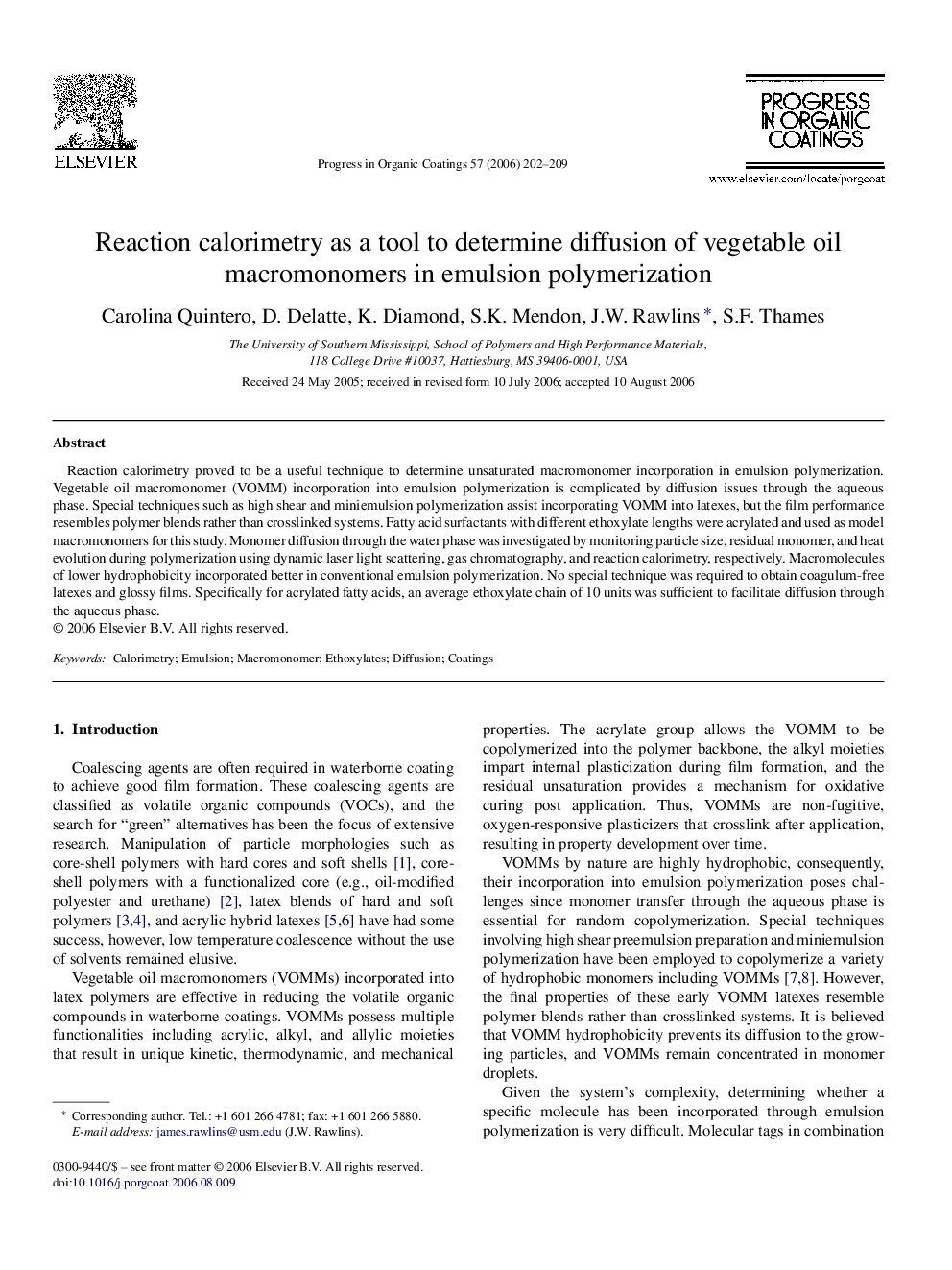| Article ID | Journal | Published Year | Pages | File Type |
|---|---|---|---|---|
| 694140 | Progress in Organic Coatings | 2006 | 8 Pages |
Reaction calorimetry proved to be a useful technique to determine unsaturated macromonomer incorporation in emulsion polymerization. Vegetable oil macromonomer (VOMM) incorporation into emulsion polymerization is complicated by diffusion issues through the aqueous phase. Special techniques such as high shear and miniemulsion polymerization assist incorporating VOMM into latexes, but the film performance resembles polymer blends rather than crosslinked systems. Fatty acid surfactants with different ethoxylate lengths were acrylated and used as model macromonomers for this study. Monomer diffusion through the water phase was investigated by monitoring particle size, residual monomer, and heat evolution during polymerization using dynamic laser light scattering, gas chromatography, and reaction calorimetry, respectively. Macromolecules of lower hydrophobicity incorporated better in conventional emulsion polymerization. No special technique was required to obtain coagulum-free latexes and glossy films. Specifically for acrylated fatty acids, an average ethoxylate chain of 10 units was sufficient to facilitate diffusion through the aqueous phase.
